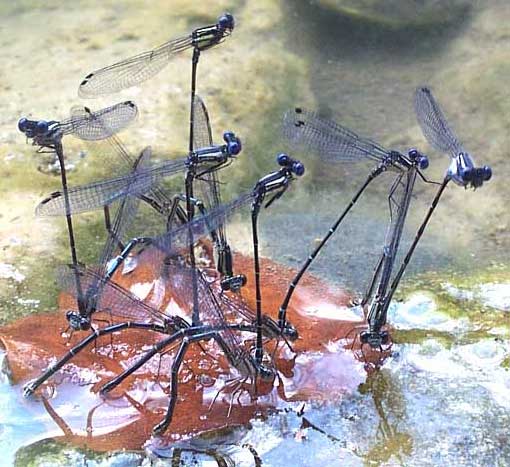Excerpts from Jim Conrad's
Naturalist Newsletter
from the June 2, 2007 Newsletter issued from Sierra Gorda Biosphere Reserve, QUERÉTARO, MÉXICO
DUSKY DANCERS ON A LEAF
At the placid pool next to which I camped there were damselflies at the water's edge doing something I've never seen before, as shown below:

That picture shows several pairs of hooked-together damselflies resting on a mostly submerged Mexican Sycamore leaf. I've seen plenty of damselflies hooked together, but never a group like this clustered so closely together. Nowhere else along the pool's banks was there another such gathering, though several partially submerged sycamore leaves appeared to offer identical resting opportunities.
Dr. John at the University of Texas identifies the damselflies as ARGIA TRANSLATA, sometimes going by the name of Dusky Dancer. That species has an enormous distribution from Ontario to Argentina.
When male and female damselflies hook together as shown in the photo, the male grasps the female behind her head, at her prothorax, using "anal appendages." Therefore, in the picture, the upright individuals are males while the ones below, with the tips of their abdomens in the water, are females. When male and female damselflies join like this they're said to be in their "tandem position."
After hooking together the female bends up her rear end, or abdomen, so that her reproductive opening touches the male where sperm are stored. During the sperm-transfer process they form a heart-shaped union and are said to be in their "wheel position." Sometimes you can see damselflies in their wheel position, and that's something special to look for.